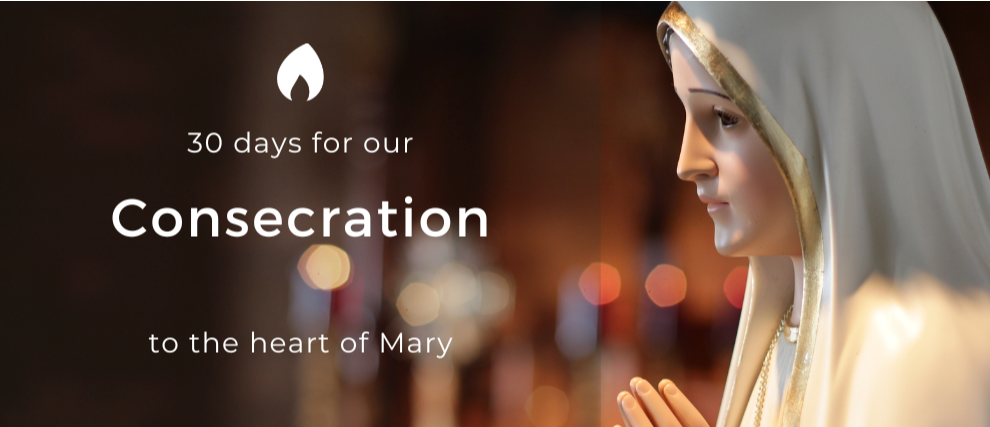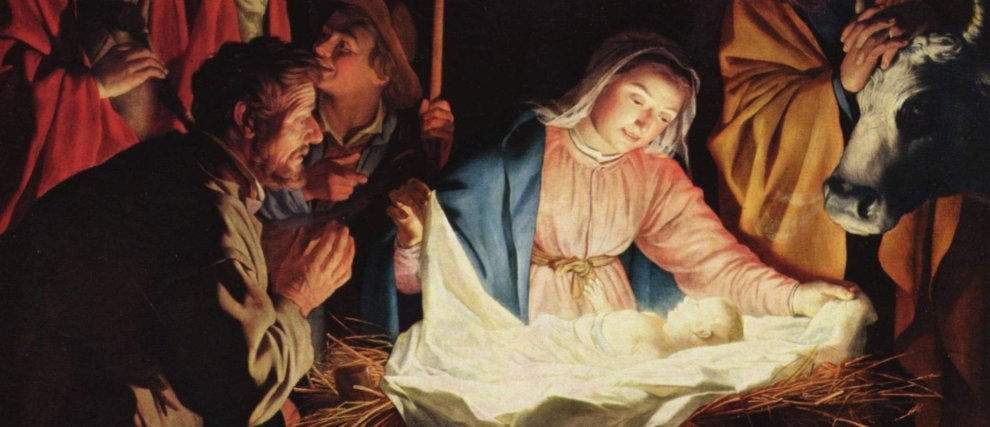The Advent
During the four-week period before the feast of Christmas, the time of Advent takes place. It is a time of waiting and spiritual preparation for the celebration of the birth of Christ, December 25.
Learn the origin and meaning of the time of Advent, as well as the liturgical process and the Christian traditions that characterize it. Finally, discover a beautiful prayer to live the Advent in the joy of waiting for the coming of Jesus Christ!
What is the Advent?
What is called “the Advent”?
The term “Advent” comes from the Latin adventus which means “coming, advent”: it thus designates the advent of Jesus, through his birth, at Christmas, but also through his glorious return, at the end of time. The Latin term also means that God is present with us, that he doesn't abandon us.
We commonly use the word “Advent” to refer to the time before Christmas.
The time of the Advent begins on the first Sunday of the Advent, four weeks before Christmas, and extends until December 25, Christmas Day.
Since when do we celebrate the time of the Advent?
We have been celebrating the time of the Advent since the 5th century. At that time, the diocese of Tours instituted a time of fasting in preparation for the feast of Christmas. Entitled “Lent of Saint Martin”, it began on November 11, the day of the feast of the saint, and thus extended until Christmas.
This practice spread over the following century to the whole of France. The Catholic Church then proclaimed a specific liturgical time, Advent, involving fasting.
At the end of the 6th century, the Advent was shortened to four weeks, and the practice of fasting was suppressed. Advent, unlike Lent, lost its aspect of repentance and penance: it became a time of joy, in the hope and expectation of the coming of Christ.
What is the purpose of the time of the Advent?
The time of the Advent is for the Christian faithful a spiritual help so that they prepare their hearts for the coming of Jesus, at his birth, but also at the end of time. The Church calls us during this time to be vigilant and watchful, because “you do not know the day or the hour” (Matthew 25:1-13).
It is a time of conversion and joyful waiting, everyone being called to change their way of life, focusing more on Christ.
In his homily of November 28, 2009, Pope Benedict XVI explains the meaning of Advent as follows: “Christian Advent is an opportunity to awaken in us the true sense of expectation, returning to the heart of our faith which is the mystery of Christ, the Messiah expected for many centuries and born in the poverty of Bethlehem.”
Liturgical Celebration of the time of the Advent
Advent: the liturgy of waiting
The opening of the time of Advent also marks the entry into a new liturgical year. This then takes place until the following year. Advent is marked by four specific times, starting every Sunday.
The Advent liturgy is specific since, just like during Lent, it is a time of preparation and waiting. The Church thus uses a particular liturgical color, purple, meaning penance. The third Sunday of Advent is celebrated with the color pink, meaning joy: it is already a prelude to the joy of Christmas!
A second peculiarity is that the gloria - the song of the angels - is no longer sung at Sunday Mass, because it is reserved for Christmas night.
The four Sundays of Advent: a preparation for the coming of Christ!
The four Sundays of Advent focus their liturgy on two major aspects: the first two Sundays call for a meditation on the return of Christ at the end of time; the next two focus on the birth of Christ and his incarnation.
Thus, Sunday readings are for Christians a call to watch and prepare for the coming of Christ. We thus read during the four Sundays of Advent the prophet Isaiah who reminds us of the long wait of the Hebrew people “A shoot will come up from the stump of Jesse; [...]. O The Spirit of the Lord will rest on him” (Isaiah 11:1-5), but also John the Baptist, inviting us to “prepare the way of the Lord” and to convert. We finally relive the Annunciation made to Mary, announcing the coming of the son of God: “The Holy Spirit will come on you, and the power of the Most High will overshadow you. So the holy one to be born will be called the Son of God.”
What are the Traditions of the Time of the Advent?
Symbols of the time of waiting, several great traditions are honored by Christians during the time of Advent: the nativity scene, the Advent crown and the Advent calendar. Both are deployed both in churches and in homes and are particularly appreciated by families, because they allow children to participate in the preparation of the feast of Christmas!
The Crown of the Advent
The Advent wreath is a wreath made of green fir branches. It is composed of four candles, lit on the occasion of each Sunday of the Advent. Three candles are purple in color, one is pink in color, thus recalling the colors of the liturgical ornaments of the four Sundays of the Advent.
The crown symbolizes the royalty of the Messiah expected by the Hebrew people; the green branches evoke the renewal of the earth, through the birth of Jesus; each candle refers to the liturgy and meditations of the Sundays of Advent. The flame of the candles symbolizes hope, the founding theological virtue of the time of the Advent.
Lighting a candle from the Advent crown is for Christians a pledge of hope and vigilance, in anticipation of the coming of Christ, at Christmas, but also at the end of time! These lights that shine during Advent already show us that the true “light of the world” is Christ, Jesus!
The Calendar of the Advent
The Advent calendar consists of 25 windows that are opened day after day during the month of December. Each of these windows has a surprise intended to prepare to welcome Jesus: it can be a pious image, a short meditation, a biblical story around the events surrounding the birth, etc.
This tradition is primarily intended for children, because it allows them to wait until Christmas day, December 25. It allows young and old to gather in prayer, to meditate on the mystery of the birth of Jesus through the symbols conveyed: light, peace, the gift of self, humility, etc.
Prayer of the time of the Advent
“Lord, at this beginning of the Advent, comes to awaken our heavy heart, to shake our spiritual torpor. Allow us to listen again to the whispers of your Spirit who begs us, watches, hopes. Lord, revive our expectation, the active vigilance of our faith in order to engage wherever life is trampled, love trampled, hope threatened, man despised.
Lord, in this time of the Advent, make us watchmen who prepare and hasten the coming and the ultimate triumph of your Kingdom, that of the kingdom of Love.”
Pray with Hozana during the time of Advent!
The time of the Advent is particularly conducive to family meditation and prayer! In order to prepare for the beautiful feast of Christmas, join the communities of prayer that Hozana offers you:
- Live the Advent according to the!
- Pray to the holy family for 9 days by asking for its protection for your own families.

